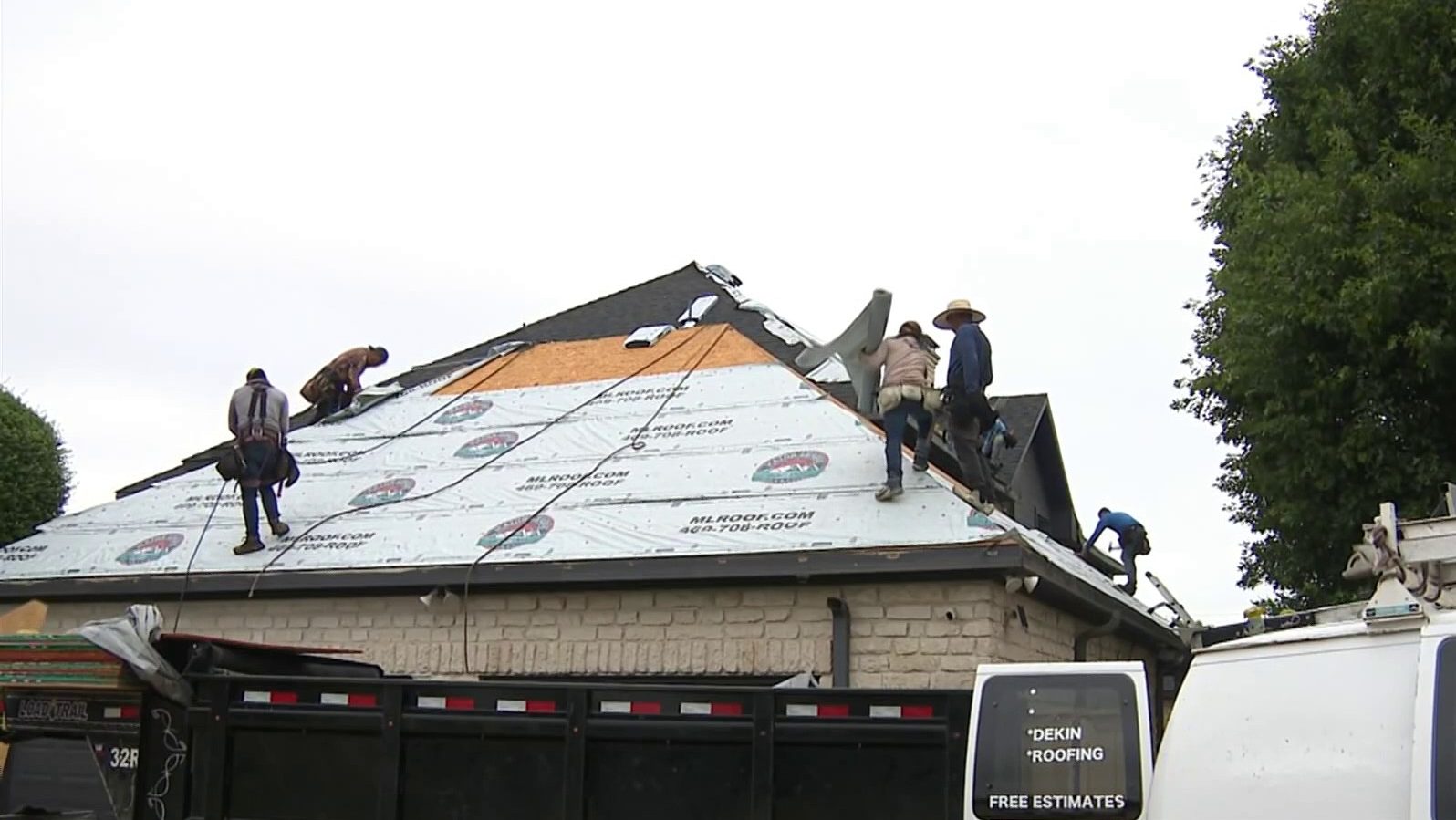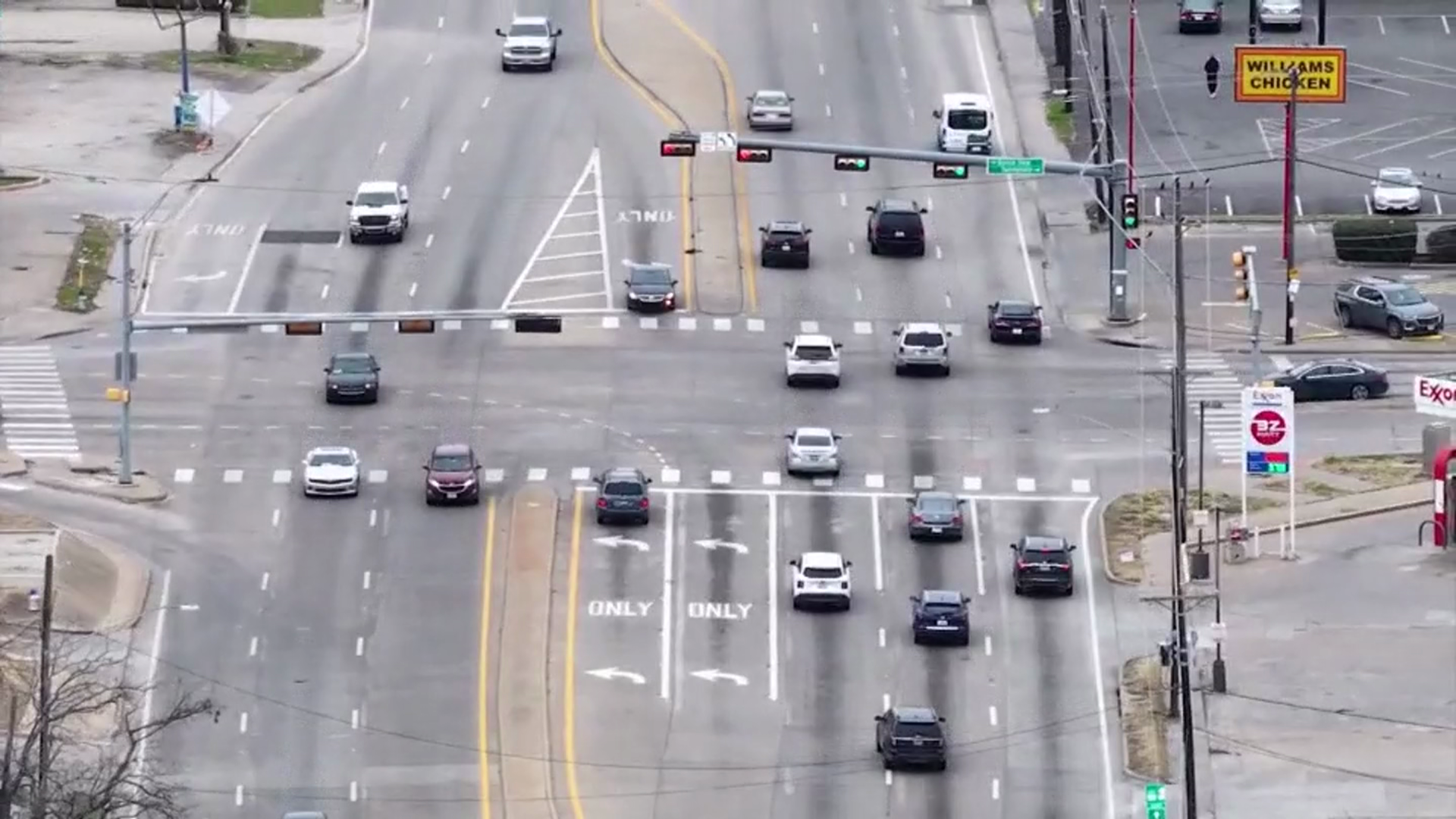A 15-acre park at the upcoming George W. Bush Presidential Center will recreate a Texas prairie, complete with a wildflower meadow, a new blend of native grasses and even trees transplanted from the former president's ranch.
"I'm really excited about it. I think it's so pretty, so beautiful," said former first lady Laura Bush, who said she envisions people strolling along the park's paths and picnicking there once the center opens at the end of April.
The park's landscaping, which was just completed this month, recreates the kind of prairie landscape that would have existed in the area before the city was here, said Mark Langdale, president of the George W. Bush Foundation.
The wildflower meadow should include Indian paintbrush, evening primrose, and, of course, Texas' beloved state flower, the bluebonnet, when it blooms next year.
"This spring I'm feeling pretty good we'll have some bluebonnets," said the center's landscape project manager Herb Sweeney IV, a senior associate with the landscape architecture firm Michael Van Valkenburgh Associates Inc.
The presidential center on the campus of Southern Methodist University will feature a library including archives and a museum. The approximately 227,000-square-foot, three-story center, will also house Bush's policy institute.
The museum will feature a Texas interpretation of the White House Rose Garden, which Laura Bush said museum-goers will come to about halfway through their visit. She said the garden, lined with trees and roses and featuring benches and a replica of the West Wing Colonnade, will be a peaceful spot for reflection after going through exhibits covering the Sept. 11 terrorist attacks and the wars in Iraq and Afghanistan.
Local
The latest news from around North Texas.
"They'll be able at that point to step out, and they say if you can get out in the sunshine and outside, you'll feel refreshed and then you can go back and do the second half of the museum," Bush said.
From the rose garden, visitors will be able to see a view of downtown Dallas and also look out over the park, which will spread out to the south behind the building.
Bush said prairie restoration is important to her and her husband. They've worked over the years to restore the native prairie at their ranch in Crawford, about two hours south of Dallas. She also said it was important to use native plants and trees at the center's park.
"This is what will do the best. It'll look the best. It'll be the most attractive because it's suitable for this kind of weather, this climate that we have in Dallas," Bush said.
Among the grasses being used is a new, hardy grass made up of several native grasses and developed by the University of Texas at Austin's Lady Bird Johnson Wildflower Center, which has been a consultant on the landscaping. Sweeney said it'll be the first large-scale planting of the grass, called Habiturf.
The park includes a sloping hill that dips into lowlands, where water gathers. The park will feature more than 900 native species of trees, including pecans and oaks. A couple hundred of those trees came from the Bushes' tree farm at Crawford, Sweeney said.
Various shrubs, prairie plants and vines will round out the landscape.
The Bush center is aiming to get the highest-level certification from the U.S. Green Building Council: LEED, or Leadership in Energy and Environmental Design, Platinum certification. Its eco-friendly features include green roofs in three different areas, the use of local materials, and a cistern that will gather rainwater and provide half of the site's irrigation.
Laura Bush said prairies -- which consist of 75 percent grass and 25 percent wildflowers -- are a haven for animals, giving cover to ground-nesting birds, for instance, and providing food for them. She added that the flowers will attract butterflies.
The park has already attracted one new resident: a red-tailed hawk, Sweeney said.
Another feature of the park will be a small amphitheater-like area with seating made from limestone. Limestone is a recurring theme at the center and is included in accents on the red-brick building. Langdale said all of the limestone used is from Texas, except that used for the indoor flooring in the center's Freedom Hall, a light-filled 67-feet-high open space. That limestone, he said, comes from Tunisia and symbolizes the start of the Arab Spring movement.



